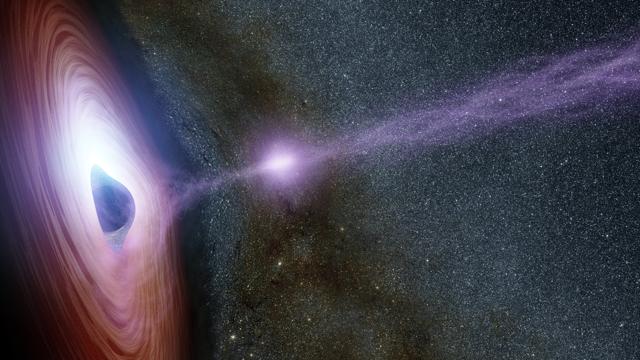Kolkata scientists develop quicker method to calculate mass of Black Holes
The method, which scientists from the National Centre for Basic Sciences in Salt Lake, have developed is much simpler and quicker but is equally accurate as its predecessors. It takes around just 15 minutes to come up with the mass of a Black Hole.
What took scientists days across the world to calculate can now be done only in a few minutes. A team of Kolkata-based scientists claim to have developed a quicker method to calculate the mass of Black Holes - one of the most mysterious and strangest objects in the universe.

“Earlier, it took several days or even months to calculate the mass of Black Holes. The method which we have developed is much simpler and quicker but is equally accurate as its predecessors. It takes around just 15 minutes to come up with the mass of a Black Hole,” said SK Chakrabarti head of the astrophysics department of SN Bose National Centre for Basic Sciences in Salt Lake.
The finding has already been published in the Monthly Notices of the Royal Astronomical Society, one of the world’s oldest and leading journals on astronomy and astrophysics published from London.
Simply speaking, Black Holes are dead bodies of stars, which have so much gravity that it gulps down everything around it in space, including light. People can’t see black holes as no light can pass though it. Scientists, however, can detect their presence with special telescopes.
Read: A beginner’s guide to black holes
Black Holes have intrigued astronomers and astrophysicists for long as they are important tools for probing and testing the fundamental laws of the universe. NASA scientists are trying to learn more about Black Holes using spacecraft like the Chandra X-ray Observatory, the Swift satellite and the Fermi Gamma-ray Space Telescope to answer questions about the origin, evolution and destiny of the universe.
“Previously, scientists required lengthy sets of radiation data – coming from stars revolving around a black hole - to calculate the mass of Black Holes using Kepler’s Laws. These radiations are detected by satellites over a several days. We, however, need just about five minutes of radiation data from satellites and another few minutes to calculate the mass,” said Aslam Ali Molla, a member of the research team from Indian Centre for Space Physics (ICSP) that made the discovery.
Chakrabarti ,who heads the ICSP and was recently conferred with the ‘Banga Ratna’ award by the state government, explained that whenever a Black Hole eats any matter, it emits very high energy radiation. This can be predicted by scientists. The method developed by Chakrabarti and his team needs just a few minutes of this radiation data captured by satellites.
Read: Einstein proved right again: Gravitational waves detected in space for 2nd time
“A little comparison could help decide how quick our method is. While scientists till date have been able to estimate the mass of around just 20 Black Holes in the Milky Way galaxy of which our solar system is a part, we have already been able to ascertain the mass of four Black Holes. Calculations are going on for another four,” said Chakrabarti.
A safe estimate by scientists suggests that there are as many as ten million to a billion black holes in the Milky Way galaxy alone. Every day scientists detect the formation of new black holes in the form of gamma ray bursts. While the smallest black holes could be the size of an atom with the mass of a mountain in it, the largest ‘Supermassive’ Black Holes can hold around ten billion suns together.
Read: Ripples in space time: Gravitational waves ‘seen’ from black hole
Visible matter – which can be seen and has gravitational forces comprises just around 4 per cent of the universe. Dark Matter – which includes Black Holes, Brown and Black Dwarfs – comprise another 30 per cent of the universe. We can’t see them but can feel their gravitational forces. The rest is Dark Energy that is supposed to repel gravitation
“Our method conforms with Einstein’s theory of relativity. This proves that we are heading in the right direction,” said Chakrabarti.





